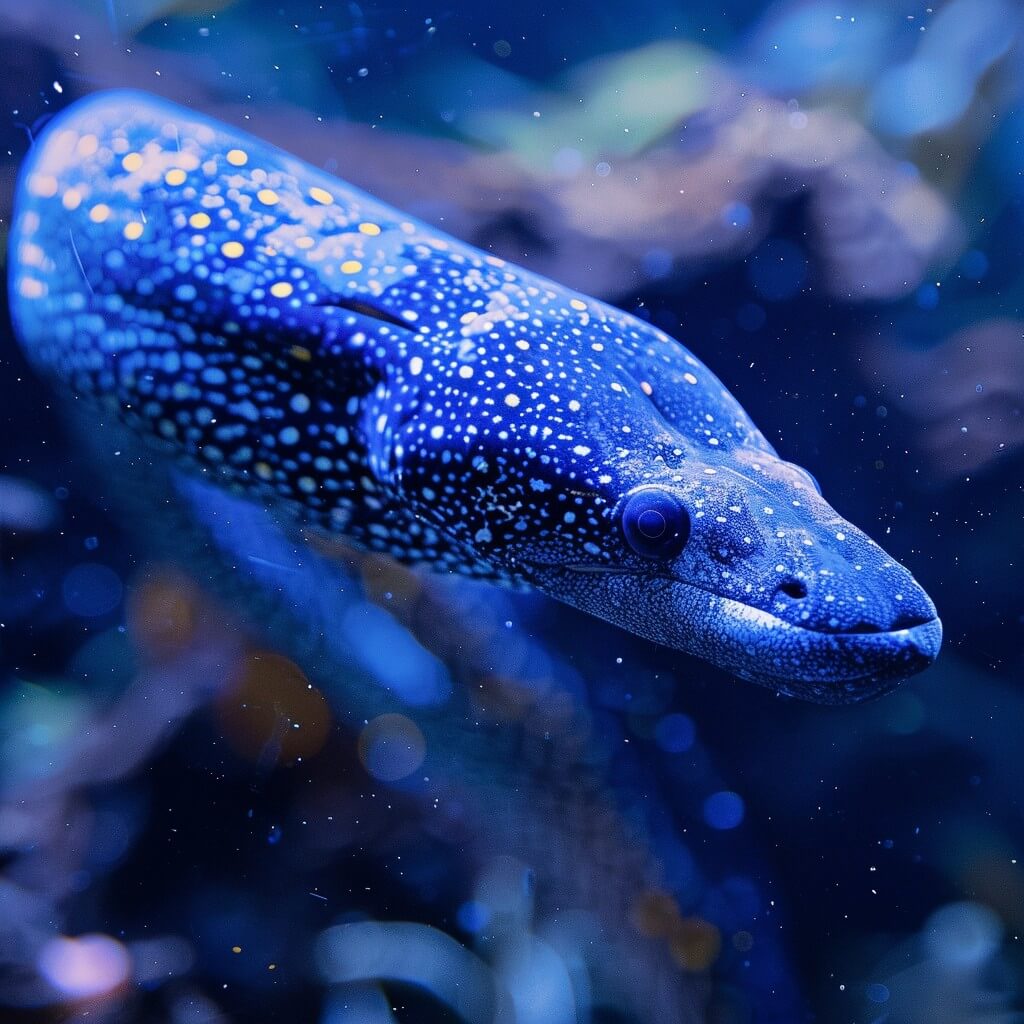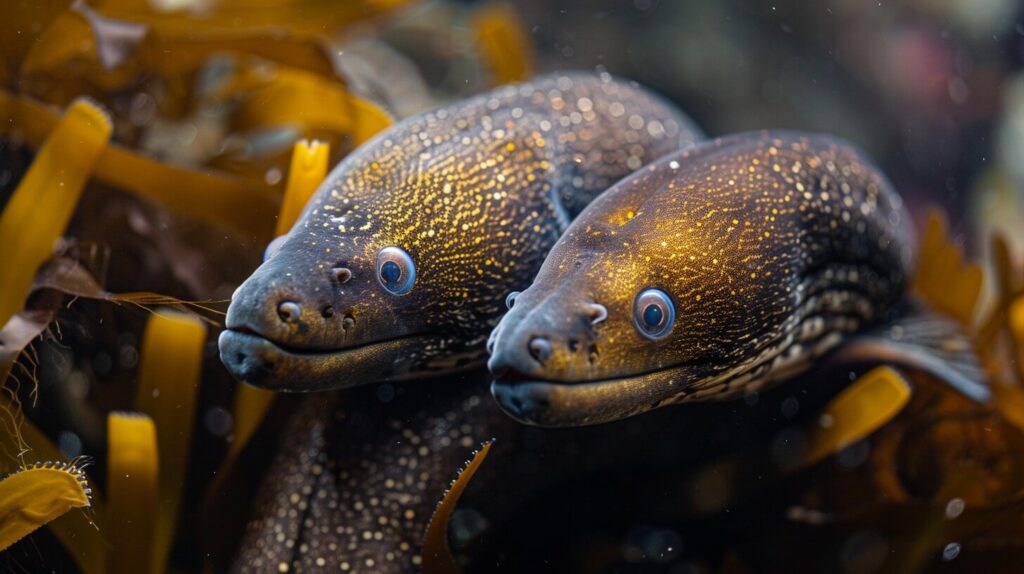
Maintaining a clean water tank is crucial for ensuring safe and healthy water for your household.
One unconventional yet effective method that has gained attention is using eels to clean your water tank.
This guide will answer common questions, address concerns, and provide practical tips on this natural cleaning method.
Let’s dive in!
Common Questions and Concerns
How do eels clean a water tank?
Eels are natural scavengers that consume algae, debris, and other organic matter, helping to keep your water tank clean.
Their constant movement and foraging behaviour stir up sediment and prevent the buildup of unwanted materials.
This natural cleaning process mimics their role in natural ecosystems, where they contribute to the health and cleanliness of their habitats.
Is it safe to use eels in my water tank?
Yes, eels can be a safe and eco-friendly option for maintaining a clean water tank, provided they are suitable for your tank’s environment and you follow proper guidelines.
It’s essential to choose the right species of eel and ensure your tank’s conditions are compatible with their needs.
Eels are generally hardy creatures, but they still require a suitable environment to thrive and perform their cleaning duties effectively.
What types of eels are best for cleaning water tanks?
Typically, freshwater eels like the American eel or European eel are suitable for water tanks.
It’s important to choose eels that are compatible with the size and conditions of your tank. These species are known for their adaptability and scavenging behaviour, making them ideal candidates for this purpose.
Always research the specific needs and behaviours of the eel species you are considering to ensure they will be a good fit for your tank.
How do I introduce eels to my water tank?
Gradually acclimate the eels to your tank by slowly mixing the tank water with the water in their transport container over a period of time.
This helps them adjust to the new environment, reducing stress and increasing the likelihood of successful integration.
A slow acclimation process can take several hours but is crucial for the eels’ well-being and effectiveness in cleaning your tank.
What should I feed the eels?
While eels will eat algae and organic debris, you should supplement their diet with appropriate eel food to ensure they remain healthy.
Commercial eel food, small fish, worms, and other protein-rich foods can be good options. A balanced diet helps eels stay active and effective in their cleaning role.
Regular feeding also prevents them from becoming too reliant on the natural food sources in your tank, ensuring they continue to perform their cleaning duties efficiently.
How Eels Work as Natural Cleaners
Eels are efficient at cleaning because they:
- Consume Algae: Eels feed on algae, preventing it from building up on the walls and floor of your tank. This not only keeps the tank clean but also maintains the water quality by reducing the levels of algae-related toxins.
- Scavenge Debris: They eat leftover food, dead plants, and other organic materials, reducing waste accumulation. This scavenging behaviour mimics their natural role in ecosystems, where they help maintain balance by consuming detritus.
- Promote Water Circulation: Their movement helps keep the water in motion, preventing stagnant areas where debris can settle. This natural circulation can enhance the effectiveness of your tank’s filtration system and improve overall water quality.
Benefits of Using Eels for Tank Cleaning
Eco-Friendly Solution
Using eels is an environmentally friendly way to maintain your water tank.
Unlike chemical cleaners, eels provide a natural method of controlling algae and debris without introducing harmful substances into the water.
This can be particularly beneficial for those who prefer sustainable and eco-conscious practices in their household maintenance routines.
Cost-Effective
Once introduced, eels can continuously clean your tank with minimal ongoing costs.
While there may be an initial investment in purchasing the eels and setting up their environment, the long-term savings on cleaning supplies and maintenance can be significant.
Eels also require relatively low maintenance compared to mechanical or chemical cleaning solutions, making them a cost-effective choice for many tank owners.
Natural Behaviour
Eels’ natural scavenging behaviour means they are well-suited to this role without requiring extensive training or intervention.
Their instinctual behaviours drive them to seek out and consume algae, detritus, and other unwanted materials in the tank, providing an efficient and self-sustaining cleaning solution.
This can be particularly appealing for those who prefer to rely on natural processes and behaviours rather than artificial interventions.
Enhances Tank Ecosystem
Introducing eels can contribute to a more balanced and diverse tank ecosystem.
Their presence can help control the population of certain algae and detritus, creating a healthier environment for other tank inhabitants.
This balance can be crucial for maintaining the overall health and stability of the tank’s ecosystem, benefiting all the organisms living within it.
Step-by-Step Guide to Using Eels
Prepare Your Water Tank
Before introducing eels, make sure your water tank is suitable for their habitation:
- Check Water Quality: Ensure the water is free from harmful chemicals and pollutants. Regular water testing can help you maintain optimal conditions for both the eels and other tank inhabitants.
- Install a Lid: Eels can be escape artists, so secure your tank with a lid to prevent them from getting out. A secure lid also protects the eels from external threats and prevents accidental escapes, ensuring they remain in the tank where they can perform their cleaning duties.

Select the Right Eels
Choose healthy eels from a reputable source. Look for:
- Active Behaviour: Healthy eels are active and responsive. They should show interest in their surroundings and move around the tank with ease.
- Clear Skin: Avoid eels with visible injuries or signs of disease. Healthy eels have smooth, clear skin without any lesions, discoloration, or abnormal growths. Inspect the eels closely before purchasing to ensure they are in good health.
Introduce Eels to the Tank
- Acclimate Slowly: Mix tank water with the transport water gradually over an hour. This gradual acclimation helps the eels adjust to the new water chemistry and temperature, reducing stress and increasing their chances of successful adaptation.
- Release Gently: Once acclimated, gently release the eels into the tank. Avoid sudden movements or dropping the eels into the tank, as this can cause stress and injury. Use a soft net or your hands (if you are comfortable) to carefully place the eels into the water.
Monitor and Maintain
- Regular Feeding: Supplement their diet with appropriate eel food. A well-fed eel is more likely to stay healthy and active, contributing effectively to tank cleaning. Monitor their eating habits and adjust the feeding schedule as needed to ensure they receive adequate nutrition.
- Check Water Quality: Regularly test the water to ensure it remains healthy for both eels and humans. Keep an eye on parameters such as pH, ammonia, nitrite, and nitrate levels, and make adjustments as needed to maintain optimal conditions. Regular water changes and proper filtration can also help maintain water quality.
Observe and Adjust
- Watch Behaviour: Monitor the eels for any signs of stress or illness. Healthy eels are active, responsive, and display normal behaviour. If you notice any changes in their behaviour, such as lethargy, erratic swimming, or loss of appetite, investigate the potential causes and address them promptly.
- Clean as Needed: While eels help reduce algae and debris, occasional manual cleaning may still be necessary. Regular maintenance tasks such as removing uneaten food, trimming dead plant material, and vacuuming the substrate can complement the eels’ cleaning efforts and help maintain a clean and healthy tank environment.
Potential Challenges and Solutions
Ensuring Compatibility with Other Tank Inhabitants
Eels can coexist with many other fish and aquatic species, but it’s essential to ensure compatibility.
Some fish may be aggressive towards eels, while others may become prey.
Research the compatibility of eels with your existing tank inhabitants to prevent conflicts and ensure a harmonious environment.
Providing Adequate Shelter
Eels need places to hide and feel secure. Providing rocks, caves, or PVC pipes can offer them the shelter they need.
These hiding spots also help reduce stress and encourage natural behaviours, contributing to the overall well-being of the eels.
Preventing Overpopulation of Eels
It’s crucial to avoid overcrowding your tank with too many eels.
Overpopulation can lead to competition for food and resources, reducing the effectiveness of the eels’ cleaning efforts and potentially causing stress and health issues.
Follow recommended stocking guidelines based on the size of your tank and the specific needs of the eel species you are keeping.
Handling Health Issues
Like any aquatic species, eels can be susceptible to diseases and parasites. Regular observation and prompt treatment of any health issues are essential to maintaining a healthy population.
Quarantine new eels before introducing them to your main tank to prevent the spread of diseases.
If you notice any signs of illness, such as unusual behaviour, skin lesions, or changes in appetite, consult a veterinarian experienced in treating aquatic animals for guidance on appropriate treatments.
Conclusion
Using eels to clean your water tank is an innovative and eco-friendly method that leverages their natural behaviours.
By understanding how to select, introduce, and care for eels, you can maintain a clean and healthy water tank with minimal effort.
Embrace this natural solution and enjoy the benefits of a pristine water environment for your household.
By following the steps outlined in this guide, you can effectively use eels to clean your water tank, ensuring a safe and sustainable solution for maintaining water quality.
Whether you are a seasoned aquarist or a beginner, this comprehensive guide provides the information you need to successfully incorporate eels into your tank cleaning routine.





